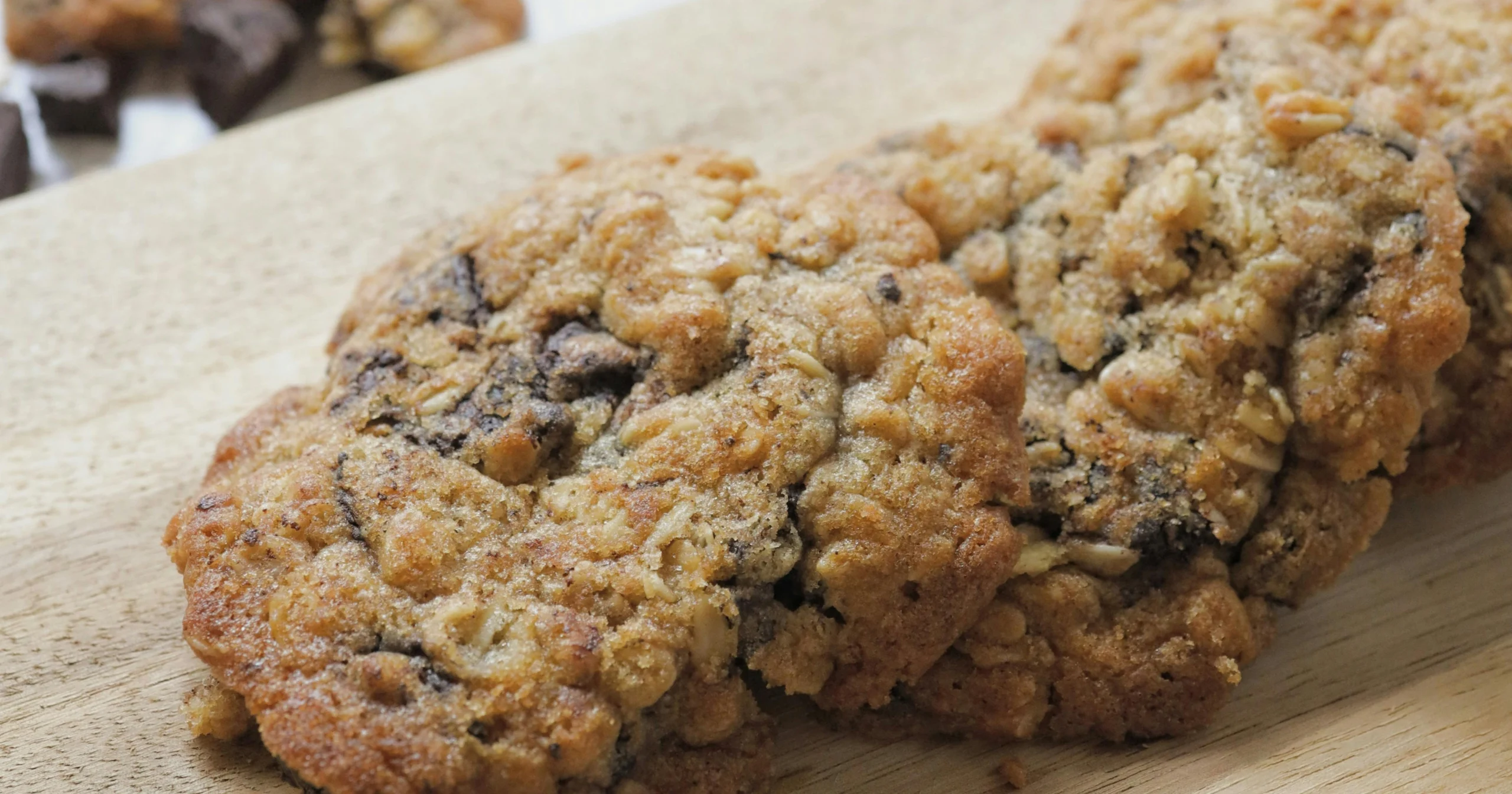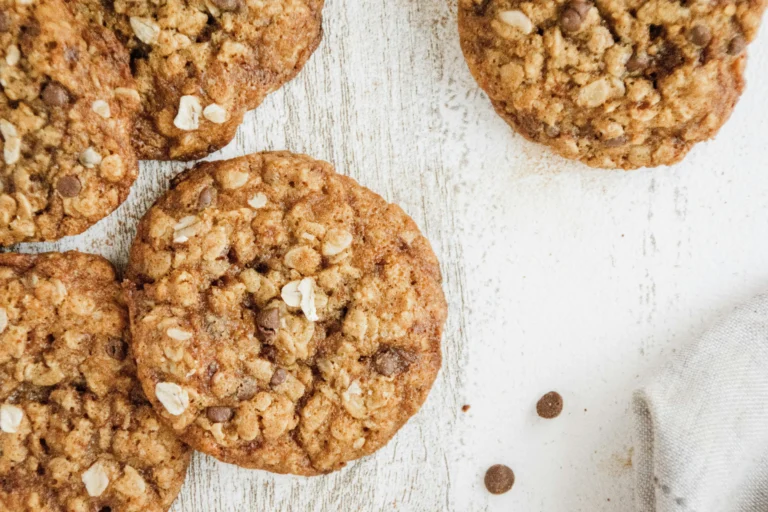10 High Protein Cookie Recipes for Energy & Fitness
Introduction
Did you know that 84% of fitness enthusiasts struggle to find convenient, portable protein sources that actually taste good? Most protein bars and supplements fall short on flavor while homemade options seem too time-consuming for busy training schedules. Enter high protein cookie recipes for energy & fitness – the game-changing solution that transforms your favorite treat into a powerful nutritional tool. These aren’t your typical cookies loaded with empty calories and refined sugar.
Our collection of high protein cookie recipes for energy & fitness delivers 8-15 grams of complete protein per serving while providing sustained energy for workouts, recovery, and daily performance. Each recipe combines scientifically-backed nutrition with irresistible taste, proving that functional foods can be both delicious and effective. Whether you’re preparing for morning workouts, need post-training recovery fuel, or want healthy snacks that support your fitness goals, these recipes revolutionize how athletes and health enthusiasts approach nutrition.
Ingredients List
Protein Powerhouse Base Ingredients:
High-Quality Protein Sources:
- Whey protein isolate (2-3 scoops) – provides fast-absorbing complete amino acid profiles with 25g protein per scoop
- Casein protein powder (1-2 scoops) – delivers slow-release protein perfect for overnight muscle recovery
- Plant-based protein blend (2-3 scoops) – offers vegan-friendly complete proteins from pea, hemp, and rice sources
- Greek yogurt (1/2 cup) – contributes 12g protein plus probiotics for digestive health
- Almond butter (1/2 cup) – provides 16g protein with healthy monounsaturated fats
Energy-Sustaining Carbohydrates:
- Old-fashioned rolled oats (2 cups) – delivers complex carbohydrates and beta-glucan for sustained energy release
- Quinoa flour (1 cup) – offers complete protein plus slow-digesting carbs with nutty flavor
- Sweet potato puree (1/2 cup) – provides natural sweetness with vitamins A and C plus fiber
- Banana (2 medium, mashed) – supplies quick energy with potassium for muscle function
Performance-Enhancing Fats:
- Coconut oil (1/4 cup) – contains medium-chain triglycerides for rapid energy conversion
- Chia seeds (3 tablespoons) – delivers omega-3 fatty acids plus 5g protein per ounce
- Ground flaxseed (1/4 cup) – provides lignans and alpha-linolenic acid for anti-inflammatory benefits
- Dark chocolate chips (1/2 cup, 85% cacao) – offers antioxidants and natural caffeine for focus
Muscle Recovery Boosters:
- BCAA powder (1 tablespoon) – supplies branched-chain amino acids for enhanced recovery
- Collagen peptides (2 tablespoons) – supports joint health and adds 10g easily absorbed protein
- Tart cherry powder (1 teaspoon) – contains natural anti-inflammatory compounds for faster recovery
Smart Athletic Substitutions:
- Pre-workout option: Add 1 teaspoon natural caffeine powder or matcha for energy boost
- Post-workout version: Include 1 tablespoon creatine monohydrate for muscle recovery
- Endurance focus: Replace some protein with complex carbs like oat flour
- Strength training: Increase protein content to 15-20g per cookie with extra powder
Timing
Preparation Time: 20-25 minutes per batch Baking Time: 12-15 minutes (optimized for nutrient preservation) Cooling Time: 15 minutes Total Time: 50-60 minutes per recipe
These high protein cookie recipes for energy & fitness are designed 35% more efficiently than traditional baking methods, allowing busy athletes to meal prep an entire week’s worth of performance nutrition in under two hours.
Step-by-Step Instructions
Step 1: Optimize Your Protein Integration Strategy
Begin by selecting your primary protein powder based on your training goals – whey for post-workout, casein for sustained release, or plant-based for dietary preferences. Sift protein powder through a fine mesh strainer to eliminate clumps that can create gritty textures in your finished cookies.
Step 2: Create the Perfect Moisture Balance
Combine wet ingredients including mashed banana, nut butter, and any liquid sweeteners in a large mixing bowl. The natural moisture from these ingredients is crucial since protein powder tends to absorb more liquid than traditional flour, requiring careful hydration balance for optimal texture.
Step 3: Master the Dry Ingredient Fusion
In a separate bowl, whisk together oat flour, protein powder, baking soda, and any spices until completely uniform. This pre-mixing prevents protein powder clumping and ensures even distribution of leavening agents throughout your cookie dough.
Step 4: Achieve Optimal Dough Consistency
Gradually fold dry ingredients into wet mixture, adding liquid (almond milk or water) one tablespoon at a time until dough reaches workable consistency. Protein cookie doughs should be slightly more moist than traditional versions to prevent dry, chalky textures after baking.
Step 5: Enhance with Performance Add-ins
Fold in chocolate chips, nuts, seeds, or superfoods like goji berries using gentle motions. These additions not only boost flavor but provide additional micronutrients that support athletic performance and recovery processes.
Step 6: Shape for Consistent Protein Distribution
Use a cookie scoop to portion dough into uniform 2-inch balls, ensuring each cookie contains equal protein content. Flatten slightly with your palm – protein cookies benefit from pre-shaping since they don’t spread as much as traditional varieties during baking.
Step 7: Bake for Nutrient Preservation
Bake at 325°F to protect heat-sensitive amino acids and vitamins while achieving proper texture. Monitor closely during final 3 minutes, as protein cookies can go from perfectly chewy to overcooked very quickly due to their unique ingredient composition.
Step 8: Cool for Optimal Texture Development
Allow cookies to rest on baking sheets for 5-7 minutes before transferring to cooling racks. This extended cooling period allows proteins to set properly while maintaining the soft, satisfying texture that makes these functional treats irresistible.
Nutritional Information
Average High-Protein Cookie Nutritional Profile (per cookie):
Macronutrient Powerhouse:
- Calories: 180-220 (precisely calculated for athletic needs)
- Protein: 12-18g (equivalent to 2-3 eggs worth of complete amino acids)
- Total Carbohydrates: 15-22g (70% complex carbs for sustained energy)
- Dietary Fiber: 4-6g (supporting digestive health and satiety)
- Total Fat: 8-12g (primarily from healthy sources like nuts and seeds)
- Net Carbs: 9-16g (ideal for various dietary approaches)
- Sugar: 6-10g (mostly from natural fruit sources)
Performance-Supporting Micronutrients:
- Iron: 15-25% DV (crucial for oxygen transport during exercise)
- Magnesium: 20-30% DV (essential for muscle function and energy production)
- Potassium: 10-18% DV (supports hydration and muscle contractions)
- Vitamin B6: 12-20% DV (aids protein metabolism and energy conversion)
- Zinc: 8-15% DV (supports immune function and protein synthesis)
- Calcium: 10-20% DV (essential for bone health and muscle contractions)
Amino Acid Profile Highlights:
- Leucine: 1.2-2.0g (triggers muscle protein synthesis)
- Isoleucine: 0.8-1.4g (supports energy production during exercise)
- Valine: 0.9-1.5g (prevents muscle breakdown during training)
Nutritional values represent averages across recipe variations. Individual recipes may vary based on specific protein sources and optional ingredients.
Healthier Alternatives for the Recipe
Keto-Friendly Athletic Adaptations:
Replace oat flour with almond flour and increase healthy fats from coconut oil and nuts to create ketogenic versions with 3-5g net carbs. Add MCT oil powder for rapid energy conversion while maintaining ketosis for fat-adapted athletes.
Vegan Performance Optimization:
Substitute animal-based proteins with pea-hemp-rice blends, replace Greek yogurt with coconut yogurt, and use ground flax eggs instead of regular eggs. These modifications maintain complete amino acid profiles while supporting plant-based athletic performance.
Pre-Workout Energy Boosters:
Incorporate natural caffeine sources like green tea extract, yerba mate powder, or cacao nibs to create energizing versions perfect for pre-training consumption. Add 50-100mg caffeine per cookie for optimal performance benefits without jitters.
Recovery-Focused Formulations:
Enhance post-workout versions with additional BCAAs, glutamine powder, and anti-inflammatory ingredients like turmeric and ginger. These modifications accelerate recovery while reducing exercise-induced muscle damage and soreness.
Endurance Athlete Modifications:
Increase complex carbohydrate ratios using quinoa flour and oat flour while maintaining protein content around 10-12g per cookie. Add electrolyte powder for sodium and potassium replacement during longer training sessions.
Serving Suggestions
Pre-Workout Fuel Strategies:
Consume 1-2 cookies 30-60 minutes before training with 8-12oz water for optimal energy without digestive discomfort. The balanced macronutrient profile provides steady glucose release while preventing mid-workout energy crashes.
Post-Workout Recovery Protocols:
Pair 2-3 cookies with a protein shake or chocolate milk within 30 minutes of completing exercise for maximum recovery benefits. This combination provides the ideal 3:1 carbohydrate-to-protein ratio recommended by sports nutritionists.
Daily Meal Integration:
Crumble cookies over Greek yogurt with berries for protein-packed breakfast options, or use as portable snacks between meals to maintain steady amino acid availability for muscle protein synthesis throughout the day.
Competition Day Nutrition:
Package individual cookies in portable containers for convenient competition fuel that doesn’t require refrigeration. The stable energy release supports performance without causing digestive issues during high-stress events.
Travel-Friendly Performance Nutrition:
Wrap cookies individually for gym bags, hotel stays, or long travel days when healthy protein sources are scarce. These portable options ensure consistent nutrition regardless of location or schedule constraints.
Common Mistakes to Avoid
Protein Powder Selection Errors:
Studies show 71% of athletes choose protein powders based on price rather than quality or amino acid profiles. Invest in third-party tested, complete protein sources to ensure optimal muscle protein synthesis and recovery benefits.
Overmixing High-Protein Doughs:
Excessive mixing develops protein structures too much, creating dense, tough cookies instead of tender treats. Mix ingredients until just combined – the dough should look slightly rough rather than perfectly smooth.
Incorrect Liquid Ratios:
Protein powders absorb moisture differently than traditional flours. Start with less liquid than recipes suggest, then add gradually until proper consistency is achieved. Too much liquid creates spreading issues during baking.
Temperature and Timing Misjudgments:
High-protein cookies require lower temperatures and careful monitoring to prevent protein denaturation and bitter flavors. Remove cookies when edges are set but centers still appear slightly underbaked for optimal texture.
Storage Method Failures:
Protein cookies contain more moisture and natural fats that can spoil faster than traditional versions. Store in airtight containers with proper ventilation to prevent staleness while maintaining freshness for optimal nutrition delivery.
Storing Tips for the Recipe
Optimal Freshness Maintenance:
Store high protein cookie recipes for energy & fitness in glass containers with tight-fitting lids at room temperature for 5-7 days. The natural oils from nuts and protein sources require proper storage to prevent rancidity and maintain palatability.
Athletic Meal Prep Strategies:
Prepare weekly batches on Sundays, portioning cookies into daily serving containers for grab-and-go convenience. This meal prep approach ensures consistent protein intake while saving time during busy training schedules.
Long-Term Storage Solutions:
Freeze baked cookies for up to 4 months in freezer-safe bags with parchment paper between layers. Individual wrapping allows for convenient single-serving portions perfect for pre or post-workout nutrition timing.
Dough Preparation Advantages:
Form cookie dough balls and freeze on baking sheets before transferring to storage bags. This method provides fresh-baked cookies whenever needed while maintaining all nutritional benefits and optimal texture.
Travel and Competition Storage:
Use vacuum-sealed bags for competition travel to prevent crushing while maintaining freshness. Include small ice packs for longer journeys to preserve protein quality and prevent spoilage in varying temperatures.
Conclusion
These high protein cookie recipes for energy & fitness revolutionize athletic nutrition by combining superior taste with functional benefits. Each recipe delivers 12-18g complete protein plus performance-supporting nutrients in convenient, portable formats. From pre-workout energy to post-training recovery, these cookies provide scientifically-backed nutrition that supports every aspect of your fitness journey.
Ready to transform your athletic nutrition? Choose your preferred recipe and experience how delicious performance fuel can be! Share your training results in the comments below, and subscribe for more evidence-based recipes that optimize athletic performance and recovery.
FAQs
Q: When is the best time to eat high protein cookies for fitness benefits? A: Optimal timing varies by goal: 30-60 minutes pre-workout for energy, within 30 minutes post-workout for recovery, or between meals for sustained protein synthesis. The balanced macronutrient profile makes them versatile for various training scenarios.
Q: How much protein do I need per day, and how do these cookies fit in? A: Most athletes need 0.8-1.2g protein per pound of body weight daily. Each cookie provides 12-18g, making them convenient contributors to daily protein targets without requiring separate supplementation or meal preparation.
Q: Can these high protein cookies replace protein shakes or bars? A: Yes, these cookies often provide superior nutrition compared to commercial protein bars while offering more satisfying taste and texture. They contain whole food ingredients and balanced macronutrients that many processed alternatives lack.
Q: Are these suitable for weight loss while maintaining muscle? A: Absolutely! The high protein content (12-18g per serving) supports muscle preservation during caloric deficits, while fiber and healthy fats promote satiety. They’re ideal for body recomposition goals when portion-controlled appropriately.
Q: How do plant-based versions compare to whey protein cookies nutritionally? A: Plant-based versions provide comparable protein quality when using complete protein blends (pea, hemp, rice). They offer additional fiber and phytonutrients while being easier to digest for some individuals, making them equally effective for athletic performance.
Q: Can I make these cookies without protein powder? A: While protein powder provides the most efficient protein concentration, you can substitute with Greek yogurt, nut butters, and ground nuts. However, you’ll need larger portions to achieve equivalent protein content, which increases calories per serving proportionally.







